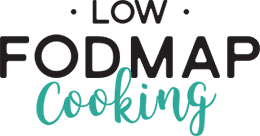Reading food labels on the low FODMAP diet
Whether you are working through the elimination, reintroduction or personalisation phase of the low FODMAP diet, reading food labels is an extremely helpful tool to ensure you don’t experience gastrointestinal discomfort. Here are some tips on how to understand and what to consider when reading food labels.
Listed by weight
In Australia all ingredients must be listed on the label and shown in order from largest to smallest by weight. If you’re at the elimination stage of the low FODMAP diet, it may be best to avoid food products that contain high FODMAP ingredients. However, if you are at the reintroduction phase, you may consider trying certain products with high FODMAP ingredients that are listed as minor ingredients such as onion or garlic powder. Once you’ve worked out your individual tolerance and are at the personalisation stage of the diet you’ll become more familiar with identifying quickly what products are suitable for you based on the ingredients list.
Low FODMAP Certified products
There are two low FODMAP product certification schemes that can help you to identify suitable products in your supermarket. These are the FODMAP Friendly and Monash University product certifications. Looking out for their icons on products means that you can shop with confidence and know that what you are purchasing has been professionally reviewed and tested.
Monash app database
If you come across a product and you’re unsure about the ingredients we highly recommend checking for the ingredient in the Monash App. If the ingredient has been tested you’ll be able to see whether it is low, moderate or high in FODMAPs and what FODMAP classification it falls under.
High FODMAP ingredients
With supermarkets offering a great range of food products, some common high FODMAP ingredients to check for include:
Sweeteners - most commonly added in beverages like soft drinks, or confectionary items. The key ones to look out for include: maltitol, mannitol, sorbitol and xylitol.
Flavourings & Spices - your typical herbs and spices like basil or paprika are low FODMAP, however some products may simply list “flavourings” or “spices”. This can be a little bit trickier to determine but remember to think about where it is on the ingredient list and what stage of the FODMAP diet you are up to. You will need to watch out for “vegetable powder” or “dehydrated vegetables” as these typically will contain onion and/or garlic. Onion and garlic powders are extremely common in sauces, premade spice mixtures or blends, stocks and marinades. It is best to steer clear unless they are low on the ingredient list and you are at the reintroduction stage.
Dried fruits - there are quite a large number of fruits high in FODMAPs (most typically being fructose). Keep an eye out for them in products such as muesli bars, yoghurts and cereals.
Flours - the low FODMAP diet does not mean gluten free, however wheat is high in FODMAPs. For this reason, you may be considering alternative flours in products like breads and baked goods. Some flours in addition to wheat that are high in FODMAPs include amaranth, barley, rye and soy. Products containing these may still be low in FODMAPs depending on if that flour is the main flour used and your tolerance level.
Reading food labels can be overwhelming and tricky at first, particularly if you’re new to the low FODMAP diet. Keep a list of your favourite low FODMAP products to keep returning to, use the steps above and also ensure you have a low FODMAP staples in your pantry to help keep you cooking comfortably.
